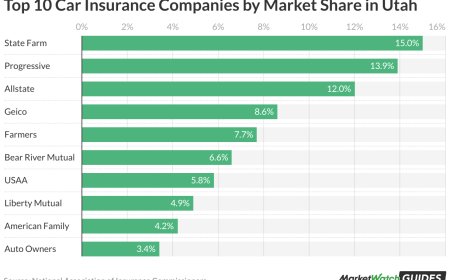5 Common IT Support Problems in SMEs and How to Fix Them
Examine five typical IT issues that SMEs face and learn how to resolve them. Discover tips on managed IT services and hiring the right IT support contractor for success.

Small and medium-sized enterprises (SMEs) depend heavily on technology to run their daily operations efficiently. Whether its communication, data storage, security, or client management, IT plays a vital role in keeping the wheels turning. Without professional guidance, these issues can grow into costly business interruptions.
1. Inadequate Data Backup and Recovery Plans
One of the most common and risky problems SMEs face is failing to implement proper data backup and recovery systems.
To fix this, SMEs should prioritise creating a comprehensive backup strategy that includes daily automated backups, secure cloud storage, and regular restoration tests to ensure everything functions properly when needed. Using managed IT services is a practical way to gain access to automated backup systems, expert monitoring, and emergency recovery support. Investing in off-site backups not only protects against local threats but also enhances business continuity and compliance with data protection laws.
- Use cloud-based backup solutions:That offer automatic, real-time backups. These systems, when implemented with the help of an experiencedit support contractor, ensure that data is saved frequently and stored off-site, reducing the risk of loss due to local damage or theft.
- Follow the 3-2-1 rule: Keep three copies of your data (one primary and two backups), store two on different storage media, and one off-site or in the cloud.
- Regularly test restoration processes:To ensure that backups are not only happening but are usable when needed. Many businesses neglect this step and only realise their backup failed when its too late.
- Create a disaster recovery plan (DRP):That includes step-by-step procedures for restoring operations after data loss. This plan should assign roles, define priorities, and set recovery time objectives (RTOs).
- Use managed IT services:To automate and monitor backups. Providers ensure that backups are performed consistently, stored securely, and restored quickly during crises. They also maintain compliance with industry-specific data protection regulations.

2. Slow or Outdated Systems and Equipment
Many SMEs continue using outdated hardware and unsupported software, which slows down productivity and increases the risk of failure or security breaches. Old systems may also lack compatibility with newer applications, creating workflow inefficiencies.
The solution involves conducting a thorough audit of existing IT infrastructure to identify underperforming or obsolete components. Businesses should schedule upgrades for ageing equipment and ensure all software is regularly updated. Leasing instead of purchasing equipment can help distribute costs over time. Hiring an experienced IT support contractor enables SMEs to gain external expertise to recommend and implement the right technologies based on operational needs and budgets.
3. Poor Cybersecurity Practices
Cybersecurity threats have become more sophisticated, and SMEs are often targeted because of their weaker defences. From phishing scams to ransomware, the consequences of a successful attack can be financially and reputationally damaging.
To address this issue, SMEs must adopt a multi-layered cybersecurity approach. This includes installing reliable antivirus software, using firewalls, enabling multi-factor authentication (MFA), and ensuring all devices are encrypted. Partnering with a managed IT services provider ensures that cybersecurity protocols are continuously updated and monitored to meet the latest threat landscape. They can also assist in drafting and implementing an incident response plan.
- An experienced IT support contractor can perform this assessment and offer tailored recommendations.
- Install reputable antivirus software and firewalls across all devices, including laptops, desktops, tablets, and mobile phones used for business.
- Implement multi-factor authentication (MFA) for email, remote access, and business-critical applications.
- Ensure systems and software are kept up to date with the latest security patches.
- Educate employees on cybersecurity awareness through regular training.
- Engage with a managed IT services provider to implement ongoing monitoring, real-time threat detection, and automated security updates.
Create a cybersecurity incident response plan so staff know what to do if a breach occurs.
4. Limited IT Support Availability and Responsiveness
SMEs often rely on a single in-house technician or part-time support, leading to delays when issues arise, especially outside standard office hours.
This challenge can be resolved by working with a 24/7 IT support contractor who offers on-demand assistance, remote troubleshooting, and service level agreements (SLAs) that define expected response times. Businesses should consider implementing a helpdesk ticketing system to prioritise and track IT issues efficiently.

5. Software Compatibility and Integration Challenges
As SMEs grow, they often adopt different tools for accounting, customer relationship management (CRM), communication, and inventory. When these systems do not integrate well, it results in data silos, manual processes, and reduced efficiency.
Cloud-based software suites, such as Microsoft 365 or Google Workspace, can unify communication, collaboration, and document storage. Engaging amanaged IT servicesfirm helps SMEs navigate the integration process by selecting compatible tools, setting up APIs, and streamlining workflows.
- Assess all current software tools to identify where inefficiencies or disconnects exist. Map out how information flows between departments and where bottlenecks or duplication occur.
- Choose cloud-based platforms that offer built-in integration with other commonly used apps. For instance, using a single provider for email, file storage, and collaborationsuch as Microsoft 365 or Google Workspacecan streamline communication and file management.
- Tools like Zapier or Microsoft Power Automate can help sync data between systems without needing custom development.
- Work with a qualified IT support contractor to evaluate your setup and design a tailored integration strategy. These experts can identify compatible software combinations, manage licensing, and ensure seamless implementation.
- Consider transitioning to an all-in-one ERP or CRM platform that centralises key business functions such as finance, inventory, customer support, and sales. This can eliminate the need for multiple disconnected tools and provide a single source of truth.
- Engage with managed IT services for long-term maintenance and upgrades. They can proactively manage software compatibility as your business evolves and ensure new tools are integrated correctly from day one.
Conclusion
The IT challenges faced by SMEs are varied, but with proactive planning and the right support, they can be effectively managed. Partnering with professional IT experts provides access to essential services such as security, system updates, and integration support without the cost of an in-house team. Investing in efficient and scalable solutions ensures long-term resilience and operational efficiency. Renaissance Computer Services Limited has years of experience delivering tailored IT solutions to SMEs across the UK. Trust us to keep your technology running smoothly so you can focus on growing your enterprise.




































